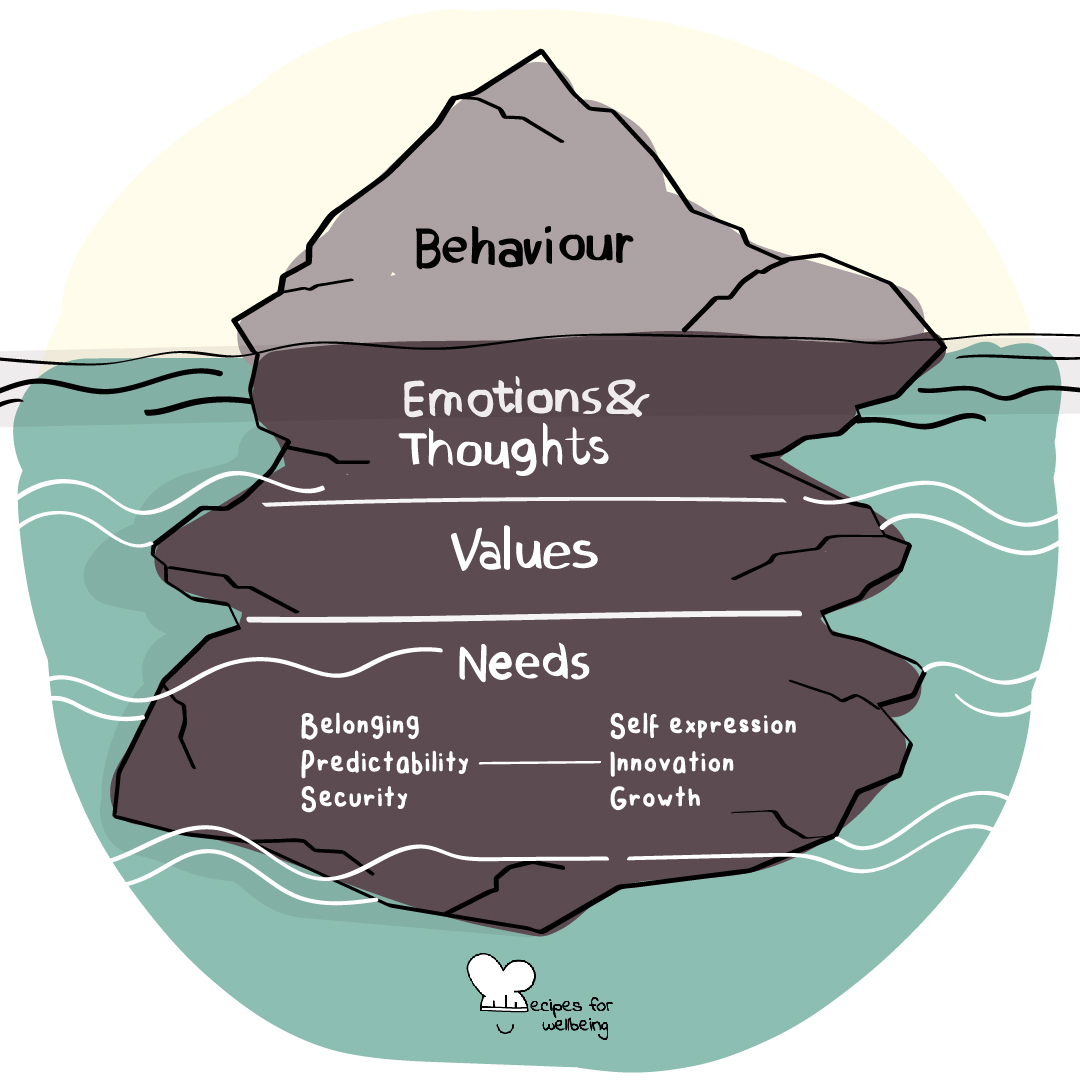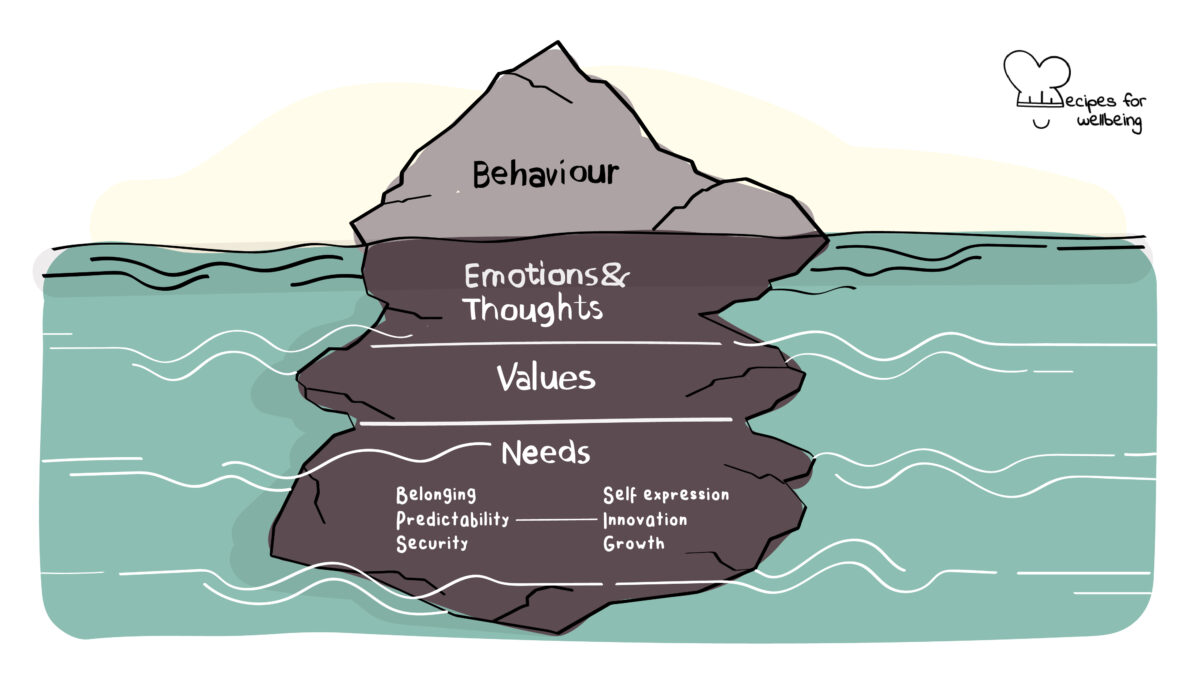
The iceberg model
The problem of a man’s existence, then, is unique in the whole of nature; he has fallen out of nature, as it were, and is still in it; he is partly divine, partly animal; partly infinite, partly finite. ―Erich Fromm
👥 Serves: 2 people
🎚 Difficulty: Medium
⏳ Total time: 30 minutes
🥣 Ingredients: Flipchart paper, markers, and sticky notes in two colours (or a digital white board if doing this online), “New Work Needs Inner Work” book by Joana Breidenbach and Bettina Rollow (if you’re curious to find out more about it!)
💪 Nutritional values: Self-Awareness, Clarity, Understanding, Self-Accountability, Empathy

The iceberg model
📝 Description
A tool to surface what is behind visible behaviour in individuals.
The four wholebeing ecologies of mind, body, heart, and soul also represent different ways in which people perceive – and engage with – the world. This recipe introduces the iceberg model, a useful tool to explore these inner dimensions. It can be particularly helpful to explore the individual and inner quadrant of another tool introduced in our recipe “The AQAL model”. In fact, as Joana Breidenbach and Bettina Rollow observe in their book New Work Needs Inner Work, “[b]elow the surface of the water lies a whole other world, consisting of thoughts and feelings, needs and interests. Although this is usually invisible and the individual is often unaware of it, it nevertheless has a significant influence on our behaviour and style of communication.
The iceberg model for self-reflection has been adapted by Keks Ackerman CC BY–NC 2.0 and is based on Nadjeschda Taranczewski’s work. If you’re curious about new work, check out Joana Breidenbach’s TEDxTalk, “New Work Needs Inner Work”.
👣 Steps
Step 1 – Understanding the model (10’)
Pair up with a team member and go through the model together, first ensuring you understand the different levels.
- Above surface • Behaviours. These are what you observe so behaviours, facial expressions, and gestures.
- Below surface • Emotions and thoughts. Emotions originate as physical sensations in your body and your thoughts about these emotions inform your feelings, which trigger a visible response, or a behaviour. Humans share some basic emotions such as sadness, joy, fear, anger, surprise, and disgust.
- Below surface • Values. Values act as your moral compass and refer to the qualities and ideas that you consider desirable, important and right. They are abstract concepts that guide your behaviours.
- Below surface • Needs. Needs are what you need to feel whole and they revolve around two basic sets of needs: belonging needs such as the need to feel safe and secure, valued and appreciated, loved and cared for and becoming needs such as the need for autonomous self-expression, independence, transcendence…
Step 2 – Applying the model (20’)
Once you have clarified your understanding of the different layers of the iceberg, apply the model to a concrete situation. Use the support of your team member as a sparring partner.
- Behaviours: Choose a behavioural pattern you have observed in yourself but are unsure as to why it happens.
- Thoughts & Emotions: Describe the thoughts that pop up in your mind when you behave this way. Also, describe the physical sensations you experience in your body. And what emotions are activated in this situation?
- Values: Reflect on what is really at stake here. What is really important for you in this situation? What values were you trying to uphold or what values have been infringed upon?
- Needs: What basic needs are not being met in that situation that activate that specific response cycle and behavioural pattern? What can you do to meet those needs the next time around?
Step 3 – Additional tools
Check out the following recipes to help you describe the different layers of your iceberg:
- Cycle of emotions to understand your emotions and choose how to act so you are not reactive but responsive.
- HALT to pre-empt impulsive decision-making.
- STOPP to work with difficult emotions.
- Stress diary to log your stress episodes.

